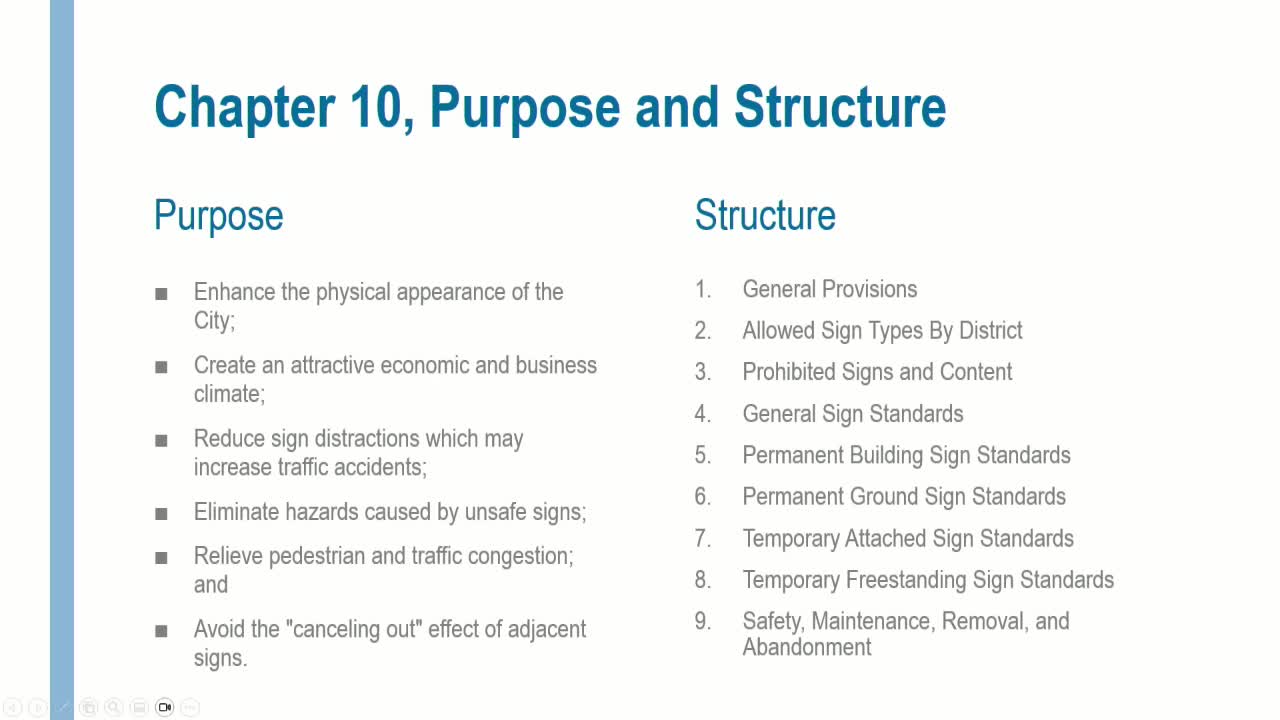Waukesha draft sign rules set district-specific limits, clarify temporary-sign rules
October 29, 2025 | Waukesha City, Waukesha County, Wisconsin
This article was created by AI summarizing key points discussed. AI makes mistakes, so for full details and context, please refer to the video of the full meeting. Please report any errors so we can fix them. Report an error »

Consultants presented a comprehensive sign chapter that enumerates allowed sign types (awnings, blade signs, canopy and marquee signs, wall and window signs, monument and pylon signs, temporary banners and sandwich boards) and sets district-specific area and height limits.
Key points
- Permanent signs: Proposed limits include residential monument signs up to 50 sq ft (8 ft height), commercial monument signs up to 100 sq ft (8–14 ft height depending on district), downtown monument signs reduced to 25 sq ft, and pylon signs with larger allowances in outlying industrial or commercial districts. The draft also restricts downtown and mixed-use districts more tightly to protect pedestrian character.
- Electronic displays and temporary signs: Draft rules treat electronic displays as accessories to monument or drive-through signs with caps on percent of total area; temporary banners, window signs and sandwich boards are regulated with short-term display limits and placement rules (for example, sandwich boards limited in the public right-of-way if they do not obstruct circulation).
- Safety and maintenance: Presenters said the chapter includes maintenance, anchoring and removal language and would defer to building inspection on structural requirements for permanent signs; temporary signs must be maintained so they do not become hazards or obstructions.
What remains unresolved
- Practical transition from the city’s current measurement method to the new approach and how the draft will interact with existing sign programs for large shopping centers.
Ending
Staff said they will refine the chapter text and provided to the Planning Commission examples comparing the current code approach vs. the proposed method for measuring sign area.
Key points
- Permanent signs: Proposed limits include residential monument signs up to 50 sq ft (8 ft height), commercial monument signs up to 100 sq ft (8–14 ft height depending on district), downtown monument signs reduced to 25 sq ft, and pylon signs with larger allowances in outlying industrial or commercial districts. The draft also restricts downtown and mixed-use districts more tightly to protect pedestrian character.
- Electronic displays and temporary signs: Draft rules treat electronic displays as accessories to monument or drive-through signs with caps on percent of total area; temporary banners, window signs and sandwich boards are regulated with short-term display limits and placement rules (for example, sandwich boards limited in the public right-of-way if they do not obstruct circulation).
- Safety and maintenance: Presenters said the chapter includes maintenance, anchoring and removal language and would defer to building inspection on structural requirements for permanent signs; temporary signs must be maintained so they do not become hazards or obstructions.
What remains unresolved
- Practical transition from the city’s current measurement method to the new approach and how the draft will interact with existing sign programs for large shopping centers.
Ending
Staff said they will refine the chapter text and provided to the Planning Commission examples comparing the current code approach vs. the proposed method for measuring sign area.
Don't Miss a Word: See the Full Meeting!
Go beyond summaries. Unlock every video, transcript, and key insight with a Founder Membership.
✓
Get instant access to full meeting videos
✓
Search and clip any phrase from complete transcripts
✓
Receive AI-powered summaries & custom alerts
✓
Enjoy lifetime, unrestricted access to government data
30-day money-back guarantee

